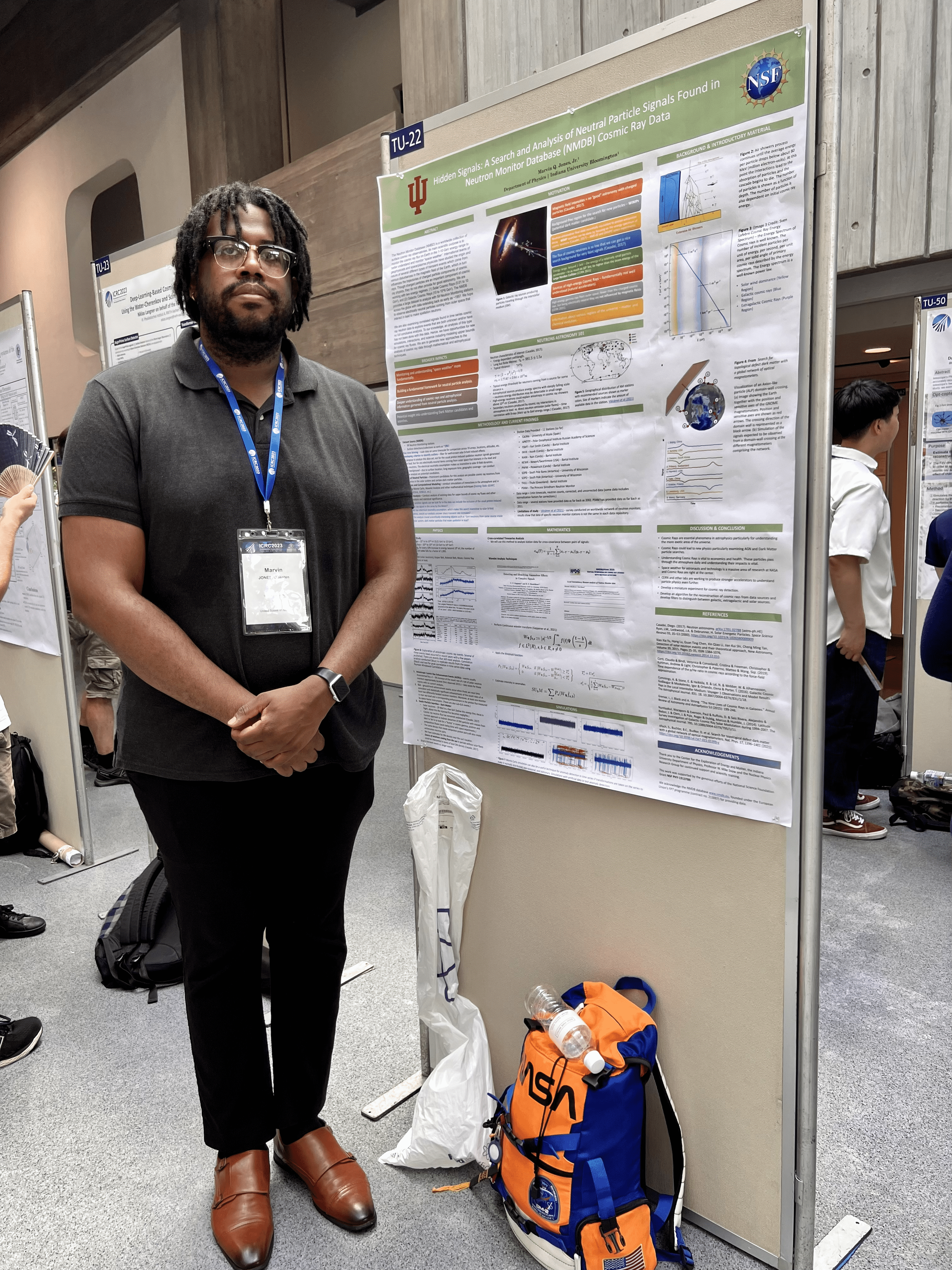Astrophysics PhD candidate Marvin Jones, Jr. presented research from his dissertation work focusing on neutral particle signal searches - an intense data mining project aiming to uniquely study neutron data for uncategorized astrophysical events - at the 38th International Cosmic Ray Conference in Nagoya, Japan. The research presentation focused on sharing results and methodology from this dissertation study. There was particular emphasis on two energy regimes: (1) Solar Cosmic Rays (0.01 to 10 GeV), and (2) Galactic Cosmic Rays (10 to 106 GeV).
The Neutron Monitor Database (NMBD) is a worldwide collection of surface cosmic ray observatories. Its main scientific purpose is to monitor the cosmic ray flux on Earth in the 1-10 GeV energy range to better understand and monitor “space weather”. International teams of geophysicists and space/plasma physicists have studied the origin and nature of several different types of transient events which come from various disturbances in the magnetic field of the Earth, which in turn influences the trajectories of charged particle components of cosmic rays. The NMDB provides a large dataset to analyze with 59 Neutron Monitoring stations across the globe with data extending back as early as ~1957.
Marvin's poster presentation demonstrated methods such as wavelet analysis and cross-correlation in time series data in searches for unusual neutral particle signals including the 2015 anisotropic cosmic ray enhancement (ACRE) event, which showed a 2-5% increase in neutron count from several detectors within the same time period. Several of these ACRE events are yet unexplained for their origin.
The 38th International Cosmic Ray Conference in Nagoya,Japan, brought together Astroparticle physicists from across the world to cover topics in neutrino physics and astronomy, cosmic ray physics, dark matter physics, solar and heliophysics, as well as multi-messenger astronomy, cosmic ray and gamma-ray astronomy. Researchers participated in plenary sessions, talks, and poster presentations with the latest updates in the field, engagement in diversity in astroparticle physics, science education in the field, and other professional development talks.

 The College of Arts
The College of Arts